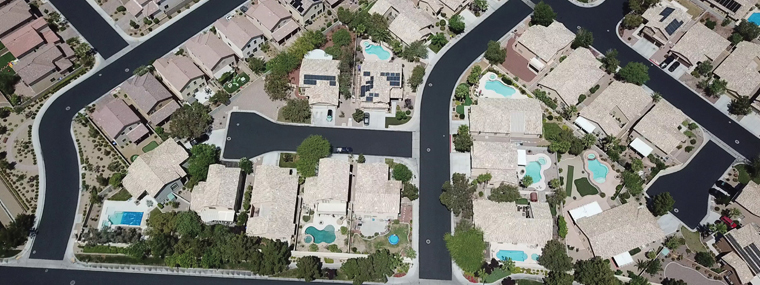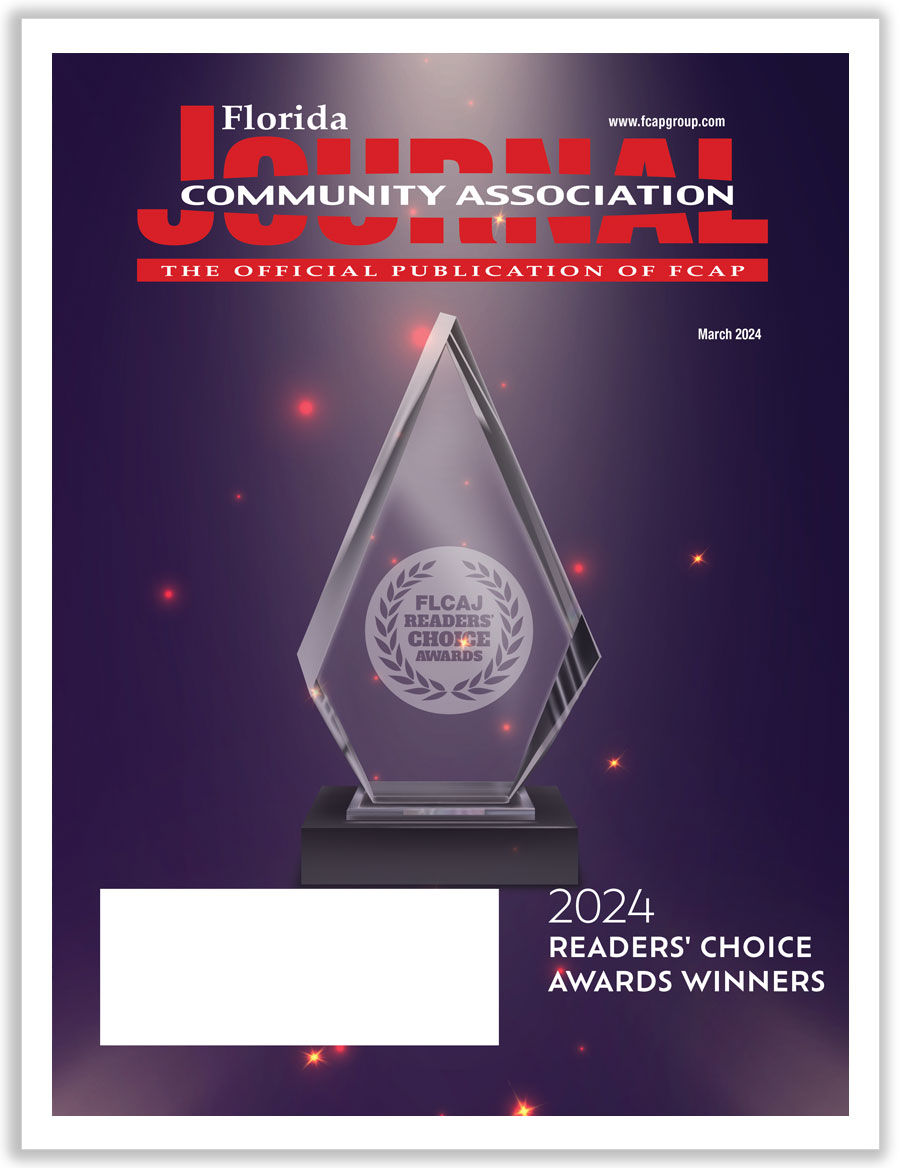
A Case Study
Asphalt Maintenance Delivers an ROI
By Mark Beatty / Published March 2023

Pavement preservation should be a top consideration for any community interested in maximizing their HOA budgets. I’ve covered topics like asphalt overlays (October 2022 FLCAJ issue), disaster preparedness (June 2022 FLCAJ issue), and some things that even the most fiscally responsible boards sometimes overlook (September 2022 FLCAJ issue).
For this issue, I was asked to provide a case study regarding an HOA project completed by our company.
I’ve always struggled to tell a customer’s story, which is why I always like the customer to tell it in his or her own words. For that reason, we have an archive of customer experiences (holbrookasphalt.com/home-owners-associations/) loaded on our website with HOA board members, city engineers, and other agency leaders to tell their experiences about their challenges and the solutions they chose.
Our company’s sole focus is to extend the life of pavement assets, and while I don’t usually speak for our customers, I do have an example I’d like to share of a private community project that HOA board members and community managers may find useful.
The Problem
The problem this community faces and continues to deal with is simple to define and common among HOAs, yet financially impactful. This community recognized that as the asphalt began to age, it would cost more and more over time, and the association would eventually have to make major repairs or fully replace the roads.
These solutions are disruptive to the community and prohibitively expensive, so naturally our customer was looking for an alternative solution.
 The History
The History
This is a large Del Webb community built in phases with a final buildout reaching 4,600 homes. When they first reached out to us, the roads in the first phase of the community were about seven years old. They were still in pretty good shape but were showing signs of age hardening.
Age hardening of asphalt is caused by oxidation. Two main factors accelerate it—UV radiation and moisture. Sunlight and water work to weaken the binder that holds asphalt together, making it brittle and leading to cracking, raveling, and other types of deterioration that, if left untreated, will cause asphalt to fail.
As a side note, a common misconception is that once you install new asphalt it will stay good for decades before it requires any maintenance. This isn’t the case. A large portion of asphalt deterioration occurs within the first four years of the asphalt’s life, so the earlier you act to stop age hardening, the longer you can expect asphalt to last.
Proposed Solutions
So back to our customer who waited a little longer to begin maintaining their roads than is best, but we provided them with some strategy options that would delay the need for major rehabilitation or replacement. We worked with them to help determine which pavement preservation solution would be the best for their pavement use and condition.
Most HOA and CDD board members have heard of seal coats, but they are just one tool in the pavement preservation toolbox. Unfortunately, the term “seal coat” is sometimes used as a catch-all phrase for all asphalt surface treatments.
Surface treatments aren’t one-size-fits-all. There are different classifications, and each has its strengths and weaknesses. A few of the more common surface treatment options are as follows:
- Seal coat
- Slurry seal
- Fog seal
- Chip seal
- High Density Mineral Bond
I go into more detail on each of these treatments in another FLCAJ article from April 2021.
For our customer’s application, the association determined that a High Density Mineral Bond would be the best solution. This community determined that this would perform longer on residential roads than a seal coat or fog seal and would have a much higher rate of public acceptance than a chip seal or slurry seal.
 The Results
The Results
We applied HA5 High Density Mineral Bond on the first phase of the community in 2013 and have completed applications on various phases of the community almost every year since then. The board and management company are pleased with the performance and are continuing with the strategy implemented in 2013. The community planned for seven years of performance but were able to go 10 years between applications.
A side benefit of the strategy the community’s board is enjoying is that it is disrupting residents less. Closing roads once every seven to ten years instead of every two to three years is something residents really appreciate.
After a few years of using a High Density Mineral Bond as the foundation of the preservation strategy, the board noticed that it was actually over budgeting for the HOA’s asphalt maintenance in the reserve study fund. The board had budgeted for a more traditional maintenance plan requiring seal coating every two to three years. Those involved with HOA finances will know that over budgeting is definitely better than under budgeting.
To solve this unexpected but pleasing issue, the community’s board president asked us to sit down with the entire board, the HOA management company, and reserve analyst to outline costs that would help them better predict the funding necessary to maintain their asphalt assets well into the future. In the end the reserve analyst recommended that the community extend the useful life estimate of their asphalt, which significantly lowers the cost of ownership and the required resident dues.
Rather than budgeting for a full asphalt replacement at 30 years, the community is now pushing that project to the 50-year mark. This strategy now in place will save the community hundreds of thousands of dollars over the life of the community.
If you’re looking for more information about this project or would like to hear from other board members on their preservation strategies, shoot me a message today at mark@holbrookasphalt.com.
Mark Beatty
Senior Vice President, Holbrook Asphalt Company
Mark Beatty is on the Advisory Board for the International Pavement Management Association and consults with public agencies and HOAs throughout the U.S. He is a sought-after presenter at public works events as well as HOA seminars. Mark serves as the Sr. Vice President at Holbrook Asphalt Company. You can contact Mark at mark@holbrookasphalt.com.




